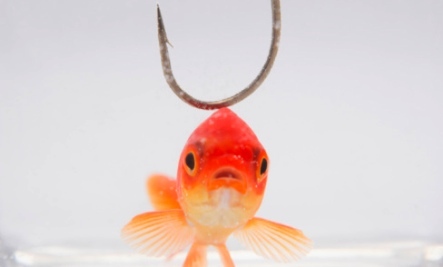
“…the way humans readily project their emotions and intentions into some animals and not others is itself a cause for concern. Few people have much fellow feeling for fish even though many fish are long-lived, have complicated nervous systems and are capable of learning complicated tasks.”
—Professor Patrick Bateson
Professor of Ethology
University of Cambridge
From salmon making the long journey from river to ocean and back, to goldfish swimming circles around a small pond, the inner lives of fishes are a mystery that scientists are only beginning to unravel. One of the key elements they are searching for is the extent to which each fish is sentient or, more specifically, how they process what we would call a “painful” sensation (such as a hook cutting into their lip.)
On this journey, scientists have discovered that fish have nerve structures that are anatomically very similar to those of humans and many other species of animals. Among these common structures are receptor cells called nociceptors, which are found throughout animals’ bodies and are activated by stimuli expected to cause damage to bodily tissues. Tellingly, some species of fish have upwards of 58 different nociceptors located in their lips alone*.
As in human anatomy, these nociceptors are wired by nerve fibres to the central nervous system (the spinal cord and brain.) When the pain centres in the brain are activated by signals from the nociceptors, they trigger the body to respond to the potentially harmful or life threatening events that may be happening.
Fish anatomy is so complex that they have even evolved the same “pain-blocking” substances (endorphins) as humans.** It is theorized that endorphins help animals to tolerate pain from severe injuries in order to help them escape from a predator. This leaves us with the question: Why would fish have endorphins in their bodies if they couldn’t feel pain? And why is there still a debate over their sentience?
* Physiologist Lynne Sneddon discovered 58 different nociceptor sites in rainbow trout lips.
** Endorphins are akin to naturally occurring morphine, although their role in the body is more complex. It is also worth mentioning that some analgesic drugs used by humans also appear to reduce pain in fish.
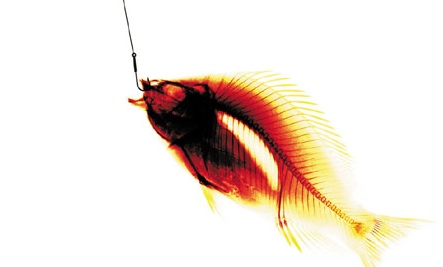
In the scientific world the line between simply reacting to negative stimuli and “feeling pain” is marked by the capacity to process and express emotions.
“Pain is an unpleasant sensory and emotional experience associated with actual or potential tissue damage, or described in terms of such damage.”
- The International Association for the Study of Pain
Thus one of the main arguments scientists use against fish feeling pain is that their brains lack certain structural elements, most importantly the neocortex, which, in other animals such as humans, processes negative stimuli into emotions. The second common argument is that their amygdoid complex (similar to our amygdala which helps us process emotions) is wired to produce aggression and not fear. The reason this is important to our sense of “feeling pain” is because our pain response also comes with a negative emotional reaction which in turn excites the amygdala and helps form a memory of the damage done to our bodies by a particular stimulus.
As you can see, in any species of animal, the concept of feeling pain is a complex one. What scientists are really trying to prove is not only that fish sense the negative stimuli damaging their bodies, but also despite the differences between their brains and ours, that they also have the capacity to associate emotions with the damage done. And some scientists claim to have proven just this.
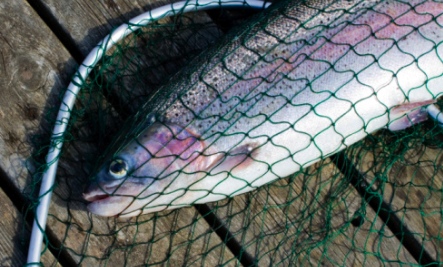
The studies listed below demonstrate that a select group of scientists have indeed begun to recognize the human concept of “feeling pain” mirrored in the captive fish they were observing. Sadly these scientists chose to further their research by intentionally inflicting pain on their unwilling participants, leaving their findings tainted with inherent cruelty.
What the studies found:
Outcome: Goldfish exhibited “fearful, avoidance behaviour” after being subjected to high temperatures and then being put back in their normal tank.
Study: Biologists injected one group of goldfish with saline solution and the other with morphine, then exposed both to a painful level of heat. Janicke Nordgreen (one of the study’s authors) said, “The fish that were given saline subsequently acted with defensive [behaviours], indicating anxiety, wariness and fear, whereas those given morphine did not”. Another one of the study’s authors also noted: “The experiment shows that fish do not only respond to painful stimuli with reflexes, but change their behaviour also after the event,” Joseph Garner.
——
Outcome: Fish displayed increased respiratory rate, avoidance of hard-pelleted food, rocking behaviour and rubbing their lips on gravel and the side of their tank walls after their lips were injected with chemicals known to cause pain.
Study: Fish were observed after having had bee venom and acetic acid injected into their lips. One group of fish received morphine after the injection; the other group only received saline solution. The fish that were given morphine (pain blocking medication) showed signs of reduced discomfort. (The University of Edinburgh and the Roslin Institute)
——
Outcome: Fish grunted when shocked with electrodes and showed signs of remembering the traumatic event.
Study: After they were shocked a number of times the fish began to grunt at merely the sight of the electrode, which they had previously been shocked by. This demonstrated their capacity to remember negative experiences. Emotions pay a key role in all animals’ capacity to remember. (Researcher William Tavolga)
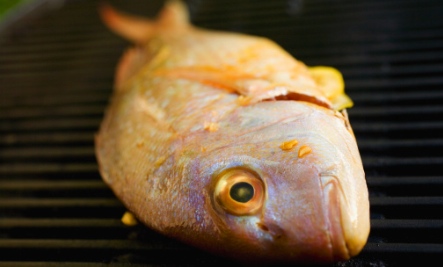
Further evidence:
- Researchers have observed that trout have an amazing capacity for memory. They can remember how to avoid a fishing net months after their initial experience with it.
- Carp have been reported to alter their feeding and nesting behaviour following being hooked, and some reports indicate avoidance of hooks thereafter.
- Fish in aquariums (both large and small scale) have shown “caged behaviours” that demonstrate the adverse emotional affects they suffer from captivity. These include abnormal feeding, shelter-seeking, bottom-sitting, head-standing and tail walking. These and other repetitive behaviours that were observed are signs of emotional stress and neurological dysfunction.
Conclusion:
Anyone who has gone fishing can attest to how hard each fish struggles against the hook it has unwittingly bitten into and how vehemently their bodies continue to fight even as they slowly suffocate on land.
Perhaps it is not the way in which fish process pain that is in question, but rather our own ability to empathize with them.
While it is easier for us to recognize our own expressions of fear, love and pain reflected in such species as dogs, primates and felines, this does not mean that we have a right to needlessly* kill or harm animals whose inner lives are a mystery to us.
*Many people include fish in their diets under the mistaken belief that they provide nutrients that aren’t readily available elsewhere, such as DHA. The truth is, while the human body does have specific nutrient requirements, we can fulfill these needs easily and more healthfully without including fish or any other animal products in our diets. If you are concerned about essential fatty acids, there are plenty available in fruits, vegetables, nuts and seeds (especially flax seeds), and if you want “healthy protein” look no further than the produce section.
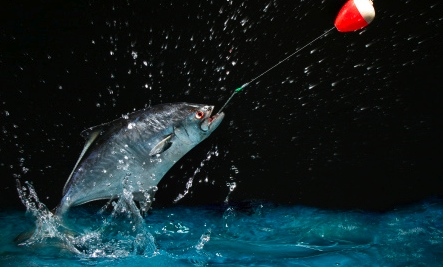
Quotes:
“Fish constitute the greatest source of confused thinking and inconsistency on earth at the moment with respect to pain. You will get people very excited about dolphins because they are mammals, and about horses and dogs, if they are not treated properly. At the same time you will have fishing competitions on the River Murray at which thousands of people snare fish with hooks and allow them to asphyxiate on the banks, which is a fairly uncomfortable and miserable death”.
—Professor Bill Runciman,
Professor of Anaesthesia and Intensive Care
Adelaide University
——
“Fish are no mere reflex-automatons, but animals capable of experiencing pain and fear and influenced [behaviourally] by experience, expectancies and motivational state in a manner analogous to that in higher animals up to man.”
—Dr R. Buwalda
Institute of Comparative Physiological Studies
Utrecht (Netherlands)
——
“Even though fish don’t scream [audibly to humans] when they are in pain and anguish, their behaviour should be evidence enough of their suffering when they are hooked or netted. They struggle, endeavouring to escape and, by so doing, demonstrate they have a will to survive.”
- Dr. Michael Fox, D.V.M., Ph.D.
——
“The scientific literature is quite clear. Anatomically, physiologically and biologically, the pain system in fish is virtually the same as in birds and mammals.”
- Dr. Donald Broom, a scientific advisor to the British government.
Adapted from an article by A. Rutherford-Fortunati











